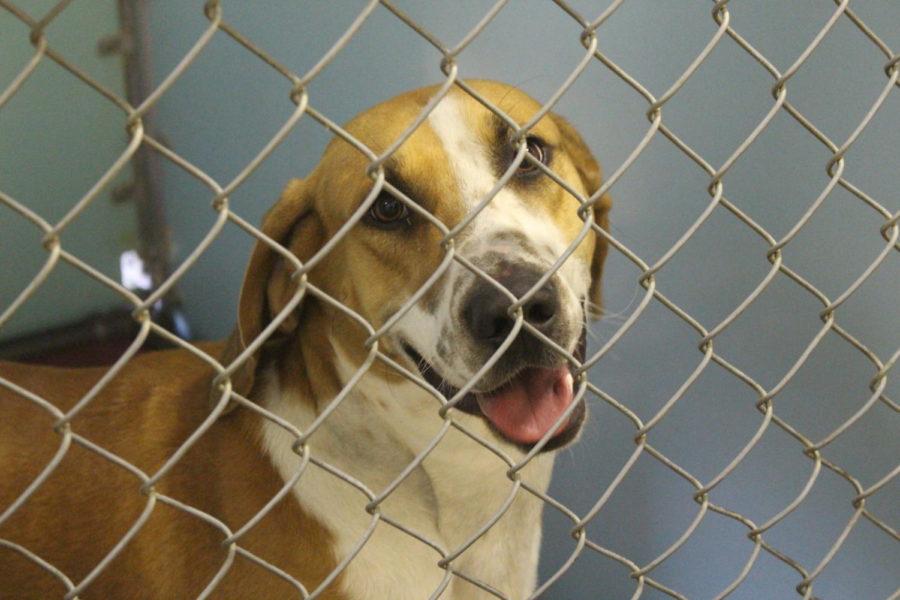A look inside the Ames Animal Shelter
The Ames Animal Shelter is an open admission shelter, meaning they don’t turn away animals for any reason except lack of space.
April 3, 2017
Ron Edwards, animal control supervisor for Ames, has worked with animal control and animal sheltering for 32 years, spending four of those years at the Ames Animal Shelter.
Before he came to Ames, Edwards worked at the County of Los Angeles Department of Animal Care and Control. He said he is on the downhill side of his career and didn’t want to retire in California, so when the position in Ames became available, he took it.
“This facility had a great reputation for saving lives, and the shelter I started at had high euthanasia rates, so a lot of animals never made it out alive,” Edwards said. “What really attracted me to Ames was the high success of adoptions, and I’m proud to say we’ve increased that.”
Edwards said the only two situations when euthanasia is ever used on an animal in the Ames Animal Shelter is if the animal has an extreme medical situation or severe behavioral issues. And even then, euthanasia is rare.
With a 95 percent success rate, most animals are either reclaimed by their original owners or find new homes.
“So it doesn’t matter how long Carlos stays with us,” he said, gesturing to the large cat sleeping across the room. “We would never consider euthanasia for time or space.”
He said that the best part of working with the shelter is helping animals, especially older ones, find homes.
“When someone comes in and looks at a 14-, 15- or even 16-year-old cat, you know that’s a really special person that will take in a senior pet because they don’t want [the pet] to have their final moments in an animal shelter,” he said.
But with the positive side of watching animals find their forever homes also comes the negative side of animal control.
“When we receive calls about animal cruelty, and we respond as we do for every call, and we find out that it’s legitimate, that’s the worst part,” Edwards said.
Abbey Weimann, the shelter’s full-time animal control clerk, agreed.
“I’m just constantly surprised at how people can discard their animals,” she said. “But many times it seems like after we find someone doing something poor to animals, someone comes in and does something amazing.”
Weimann shared a story of two Chihuahuas and a cat that had been brought into the shelter by a woman who couldn’t find housing that would allow pets. The animals had formed a special bond after the cat had both of its eyes removed and relied on the dogs to act as its Seeing Eye dogs.
Those working at the shelter didn’t expect anyone to take on the task of three new pets, but the trio was adopted after one week in the shelter.
The shelter not only helps animals find homes but it also serves as a way for the community to get some quality animal time.
“I grew up with a lot of animals back home, so it’s nice to be able to still interact with the animals even if they aren’t mine,” Iowa State junior Maddie Hora said. “It’s also a great way to de-stress during study breaks.”
Edwards encourages everyone to visit the animals at the shelter, adopt if they can and educate themselves on how to humanely care for their pets.
“They rely on us to take care of them, and that’s what we have to do,” Edwards said.







